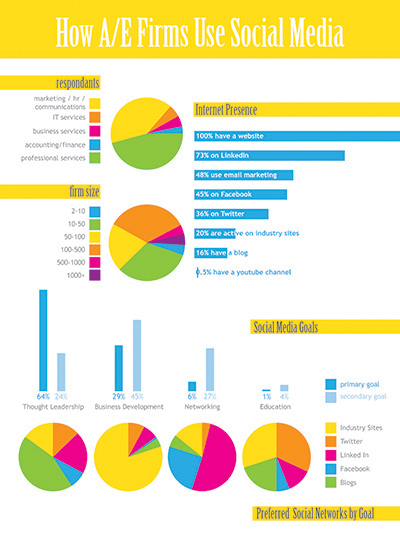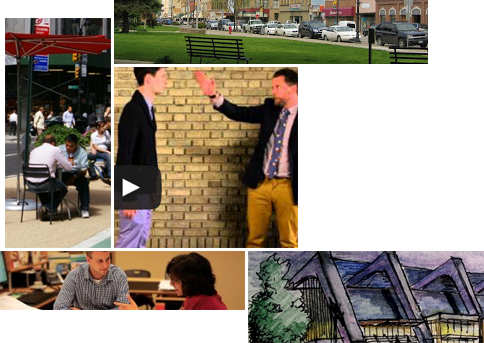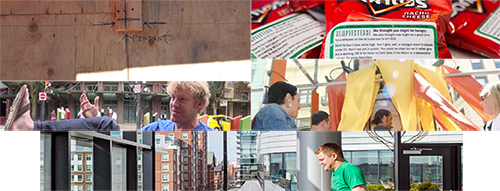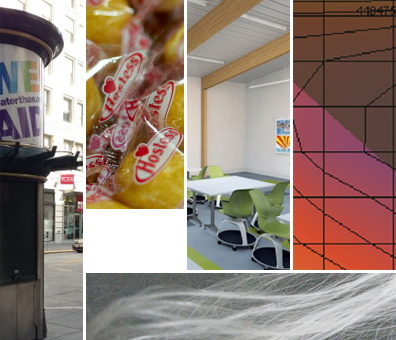Today’s world is an environment that is connected 24 hours a day, seven days a week. It’s nearly impossible to unplug from work, which means no boundaries and constantly being on alert. With these stressful work demands, more people are seeking “work-life integration” and more fulfillment in personal and family life, while also being productive and effective at work. For architect Teddy Cruz, this isn’t foreign territory – he’s been studying the blurring of boundaries at home and work for more than a decade in Tijuana, Mexico, where families adapt and expand their homes as needed.
Meagan Dickermann of Pfau Long Architecture says from a design perspective, “we know the mantra ‘form follows function’. Today’s offices look like living rooms, cafés function as workplaces, and homes have multiple offices. We are even seeing modern day communes where a mix of professionals choose to live (and sometimes work) under one roof to spark new ideas, relationships and ventures. This mix is driven by advances in technology and a we-can-have-it-all mentality.”
Cruz observed that an extra unit might be built as a retail or restaurant space to meet the needs of the neighborhood. When needed, the family may add another bedroom for their son and his new wife, or for a grandparent. “The form and function of the space is adapted to the family’s demands at that particular time of life. The result is a micro-scale mixed use “ecosystem” where family, business, and neighbors each perform essential roles,” writes Dickermann.
Dickermann says that “Cruz shares the shantytown lessons of organic growth and combined functions as a methodology for transforming the repetitious, single use, suburban developments in the sprawling areas of southern California.”
“Cruz describes multi-use frameworks with shared infrastructure—like community-owned storefronts that rotate vendors and give residents a place to conduct business. These bottom-up micro-scale developments provide a basic yet adaptable framework for neighborhoods to introduce opportunities for local commerce and connections close to home,” says Dickermann.
CEO Tony Hsieh, CEO of online retailer Zappos, has developed a concept similar to Cruz , one that embraces the potential of dynamic communities with urban design. In 2013, Hsieh moved Zappos headquarters from suburban Henderson, Nevada, to a building that once housed Las Vegas City Hall. In creating the ideal work setting, Hsieh visited other corporate campuses such as Apple, Nike and Google where he noticed they lacked one thing: urbanism
Hsieh launched a project separate from Zappos called Downtown Container Park that aims to make Vegas a destination for tech entrepreneurship and rekindle the city’s community. The development, unique for its purpose and it materials: it’s made out of shipping containers in old downtown Vegas on a block-long pedestrian mall that was once made up of lower-end casinos and motels with the purpose of providing entrepreneurs space and resources to build their new companies.
According to the Downtown Project website, the project seeks to transform downtown Las Vegas into “the most community-focused large city in the world. We are doing that by inspiring and empowering people to follow their passions to create a vibrant, connected urban core.” Hsieh’s focus is on ROC, Return on Community, with the goal of helping to “make downtown Vegas a place of Inspiration, Entrepreneurial Energy, Creativity, Innovation, Upward Mobility, and Discovery, through the 3 C’s of Collisions, Co-Learning, and Connectedness.”
Of the $350 million Hsieh allocated to the revitalization of downtown Las Vegas, $200 million is invested in real estate, $50 million in small businesses, $50 million in education, and $50 million in tech start-ups.
So far, the Container Park has boutique shops, restaurants, tech startups and a treehouse, which is an interactive play area for children. It has also created 825 new jobs.
What other ways are businesses, small and large, rekindling community?







